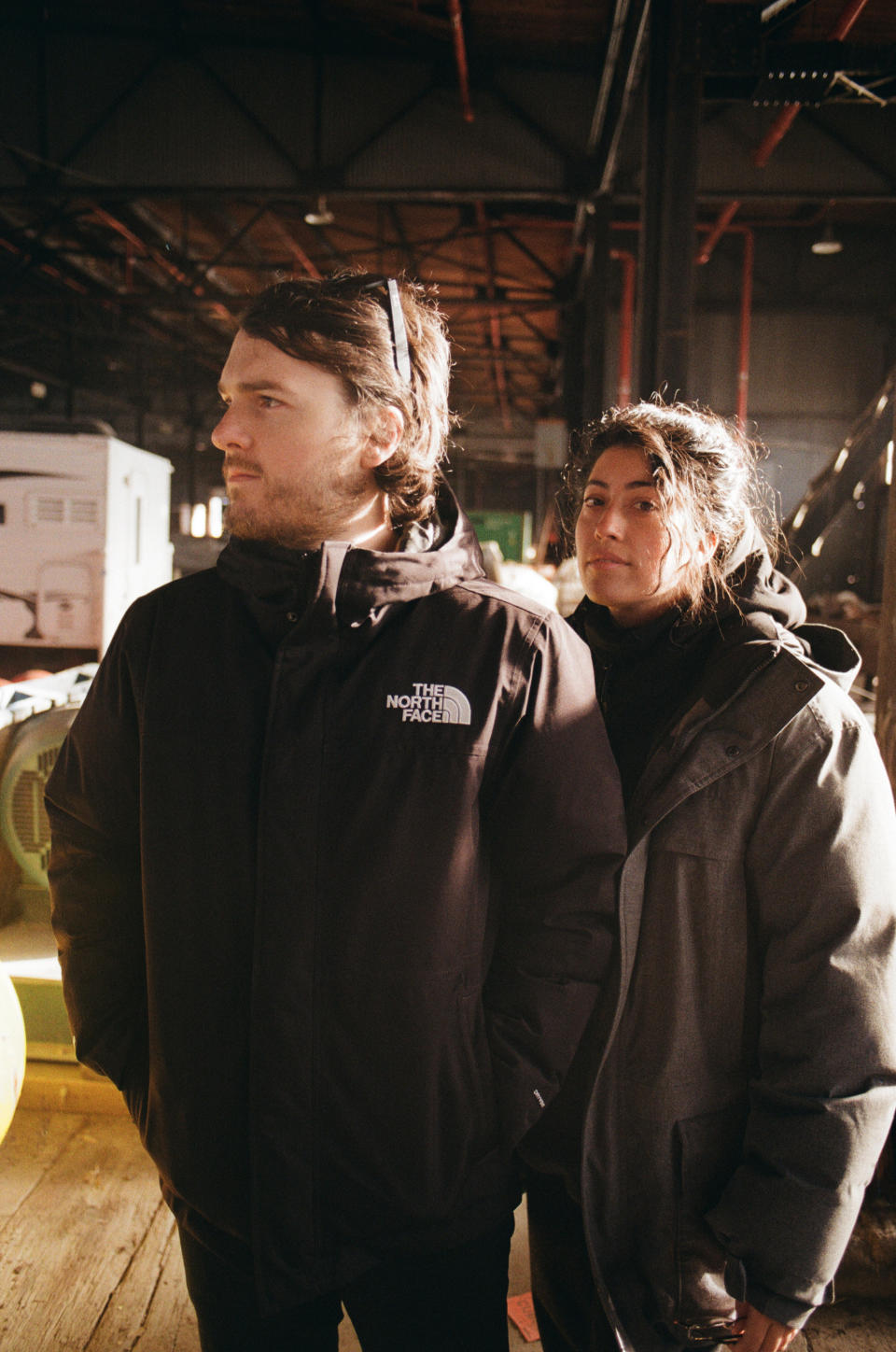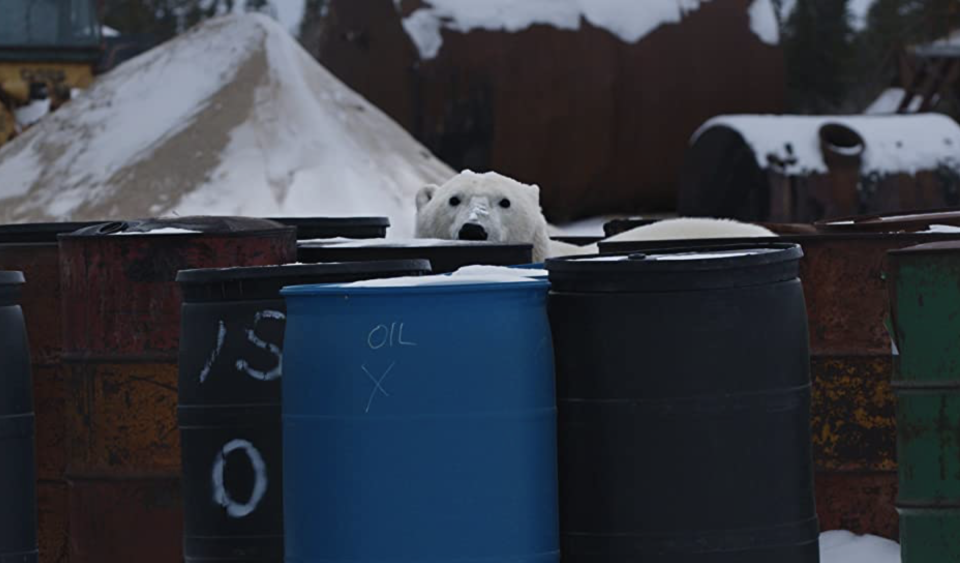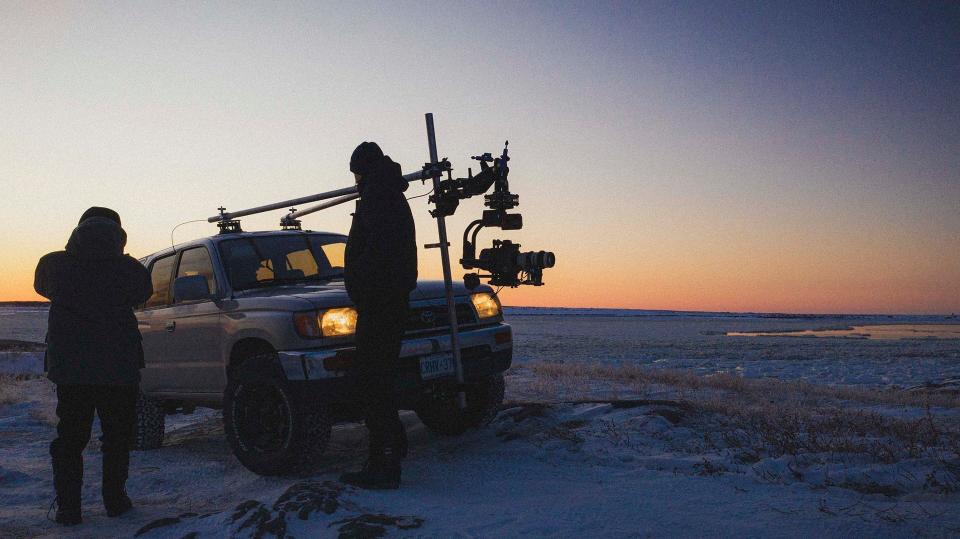‘Nuisance Bear’: Tourists And Polar Bears Get Very Close In Oscar-Shortlisted Film
- Oops!Something went wrong.Please try again later.

Polar bears are both a welcome and an unwelcome sight in the town of Churchill, Manitoba.
They’re welcome in the sense that each year the ursine creatures draw tourists to the area eager to see the bears as they migrate through Churchill on their way to winter feeding grounds on the Hudson Bay. And the tourists pour a lot of money into the local economy.
More from Deadline
On the other hand, the bears create issues — at least ones that linger too long, attracted by the aroma of food from the local dump. It is the latter kind of animal that occupies the frame in the Oscar-shortlisted documentary Nuisance Bear. The short directed by Jack Weisman and Gabriela Osio Vanden is streaming at the NewYorker.com and on the New Yorker’s YouTube channel.

“There’s a lot of films that get made in Churchill,” notes Weisman. “We realized that there was this missing component in the stories that were being captured there… It became obvious through watching those and watching the filmmakers, that there was an opportunity to do something just completely different from the traditional approach.”
Nuisance Bear begins with slow motion footage of waves crashing along a frigid shoreline, then moves to a slow tracking shot across a snowy landscape. A magnificent polar bear comes into view, striding in slo-mo, occasionally lifting its nose to inhale a snoutful of frosty air. At this stage, the film might seem like a typical nature documentary. But as the bear proceeds, it reaches a road where a grouping of tourists and assorted photographers watch it calmly lope to the other side. One guy toting a long lens turns his back on the polar bear, evidently repositioning himself for a shot with a more scenic backdrop than lanes of traffic.
“The moment where the bear crosses the road struck us pretty strongly when we captured it,” Weisman tells Deadline. “I think that moment speaks to the core of the film in a way, because to that photographer, the bear isn’t valuable when it’s in the middle of the road with the cars and the buildings and the telephone poles in the background. When it comes on the other side and it’s in the brush, then it’s valuable. And so our film is sort of composed of all the moments that people don’t think of as valuable.”
There’s another significant way Nuisance Bear differs from the usual cinematic approach to nature stories: It doesn’t contain voiceover narration or any words at all, no interviews, no music. It’s a purely visual and aural experience.
“Jack and I are both cinematographers by trade, so it felt like a natural sort of progression for our first directed film to be more centered on visuals,” Osio Vanden explains. “We’re both documentary shooters but I also work in narrative and commercials as well. And you spend a lot of time thinking about how you can show things visually. It just felt like a challenge for ourselves.”
It’s not as if the filmmakers weren’t tempted at various times to incorporate expected elements.
“We were going to add music at one point and then our sound designer was like, ‘No, please don’t add any music, you don’t need it,’” Weisman says. “It wasn’t fully intentional in the beginning, but it just got shaped by these different creative limitations.”

Striking imagery carries the 13-minute short, centered primarily around a star who sports an ivory coat, tips the scales at hundreds of pounds and ambles on padded paws the size of large skillets. The bear takes particular interest in the town dump, and bangs against metal barriers that keep it from indulging in a quick meal (raccoons have an easier time slipping through the barricades). But the film also shows humans – or at least their vehicles, used to nudge the bear away from the trash heap and other areas of human habitation.
The bears migrate in late fall and early winter, and there’s a sequence of kids out trick-or-treating for Halloween in icy nighttime temperatures. One kid slips and falls, and one can’t help but fear that a polar bear might leap upon it from the shadows.
“There’s a dramatization of polar bears in the media as being monsters,” Weisman observes. “As people that don’t live in this town, we shouldn’t speak to whether or not it’s dangerous or not to live with bears — of course it is. But I think there’s been a sort of exaggeration because it’s a grabby story about maulings. There was one mauling in the last like decade… Obviously, it was really traumatic and tragic. No one was killed, except for the bear.”
The film is really about a space shared by humans and polar bears, at least for a limited time each year (one imagines from the bears’ perspective it’s humans who constitute the nuisance, given that people chose to erect a settlement along their migratory route). The documentary isn’t intended to address larger issues of whether climate change has reduced polar bear populations either in the Hudson Bay area or elsewhere in Canada.
“We all know that as sea ice melts, they’re going to be vulnerable to that. [But] we’re filmmakers and we’re not scientists,” Osio Vanden says. “We wanted to make something that was experiential of what we were witnessing and specifically about this wildlife-human interaction.”
The soundscape of the film, from vegetation crackling in the frost to the bears’ respiration, had to be built from scratch.

“We couldn’t really record any audio with our camera because the camera was mounted on the front of the car and the sound of the engine would have overpowered any microphone,” Weisman notes. “And a lot of the slow motion also interferes with the audio… We got back with this footage and we didn’t have any audio. I had copied a library of sound effects from our university five, six years ago and I sort of made this [temp] sound design — enough to get people to feel like they could understand what was happening on the scene.”
Weisman adds, “Then I sent it to a notable director in Canada and she’s like, ‘This is a movie.’ And I was like, ‘Whoa, really?’ She said, ‘Yeah, but you need a proper sound designer and color.’ And I was like, ‘We don’t have any money.” The filmmaker recommended her sound designer, David Rose, who took on the project “for basically whatever we could afford, which wasn’t much, because he had so much like creative freedom and input. It would not have been this film without Dave.”
Executive producers of Nuisance Bear include Alex Pritz, director of the Oscar-shortlisted feature documentary The Territory, and Sigrid Dyekjær, producer of The Territory. Weisman and Osio Vanden say they didn’t necessarily count on making the shorts shortlist themselves.
“The campaigning process is a thing and you hope that you end up on the shortlist,” Osio Vanden acknowledges. “But it wasn’t expected. It was just a really good feeling.”
Adds Weisman, “It’s very unpredictable. We were obviously hopeful and we’ve been working really hard to make the film as visible as possible… It’s been such an incredible journey for us.”
Best of Deadline
2022-23 Awards Season Calendar - Dates For The Oscars, Golden Globes, Guilds & More
TV Cancellations Photo Gallery: Series Ending In 2023 & Beyond
Hollywood & Media Deaths In 2023: Photo Gallery & Obituaries
Sign up for Deadline's Newsletter. For the latest news, follow us on Facebook, Twitter, and Instagram.

